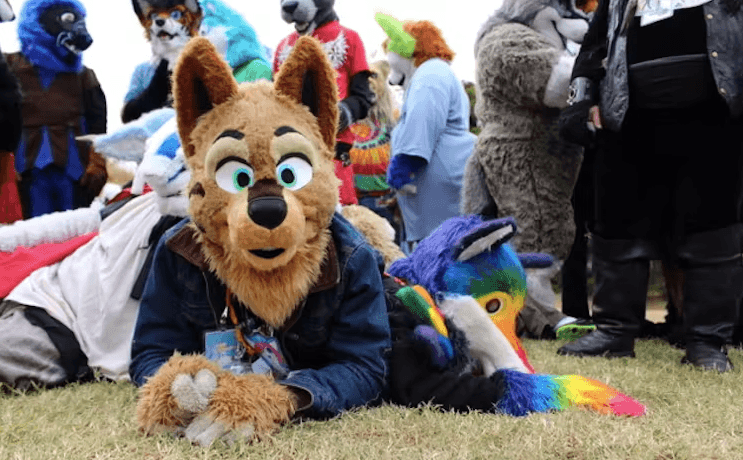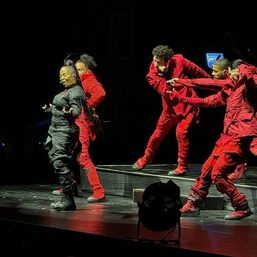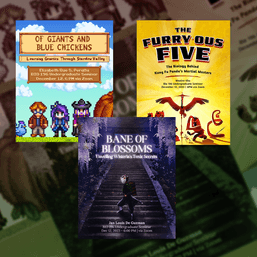SUMMARY
This is AI generated summarization, which may have errors. For context, always refer to the full article.

From abortion to book bans, critical race theory and transgender rights, much political rhetoric in the run-up to the mid-term elections in the United States has centered around “culture war” issues.
One of the most recent examples involves a relatively unknown community.
It feels like everyone has an opinion, or heard a rumor, about kids dressing up as animals, calling themselves furries and demanding litter boxes. Harmful misinformation about furries is running rampant on social media and even being promoted to some school boards.
However, misunderstanding furries was mainstream long before it became political. Prior to the litter box rumors, furries were seen as sexual deviants — an idea that was reinforced by popular media that emphasized the sensational over facts.
If your knowledge of furries comes mostly from television or social media, then what you’ve heard about furries is probably wrong. It’s not your fault — the misinformation is pervasive. I’m not a furry, and I once held erroneous views of furries, too. However, after years of research, information is now available to help correct the record.
I’m a co-founder of the International Anthropomorphic Research Project, also known as Furscience. We’re a small group of interdisciplinary professors who have studied furries and other fan groups for more than 15 years.
The basics: What’s a furry?
Have you heard of cosplay, where people costume as characters? They might dress up as a Storm Trooper or superhero and attend a comic book convention to have fun with friends. Furries do a similar thing, but with a twist.
Furries are people who have an interest in anthropomorphism, which specifically refers to giving human characteristics to animals. In its most distilled form, furries are a group of people who formed a community — or fandom — because they have a common interest in anthropomorphic media, friendships, and social inclusion.
What’s a fursona?
About 95% of furries develop their own unique avatar-like character called a fursona. The product of deep reflection, fursonas can represent idealized versions of the self that are imbued with positive characteristics, like being sociable, funny, and less anxious.
Fursonas can be a safe, functional way for furries to explore who they are as people, including their gender identity and sexual orientation. Research also indicates that a fursona can help facilitate interactions with others and result in more social confidence.
Fursuits
Many people think that furries dress up as animals. Some believe they dress that way all the time. But that’s not quite right.
Furries don’t identify as animals; they identify with animals. In the same way that cosplayers typically don’t believe they are actually Spiderman, furries don’t think they are their fursonas.
Having a fursona doesn’t mean that a furry owns a fursuit (a mascot-like outfit), and only 15-25% of furries have them. While many furries have no interest in acquiring a fursuit at all, they can also be prohibitively expensive. Some fursuits are phenomenally engineered with fans, cooling packs, and LED lights built into them.
Fursuits are usually worn on special occasions — a parade, meet-up, or convention. Another 50% of furries own furry paraphernalia — a furry T-shirt, ears, collar, or tail — that communicates their furry interests to others.
Have you met sports fans who wear their team’s jersey at a special event, such as a game, or a music fan who wears their favorite band’s branded T-shirt? Most people wouldn’t wear this kind of fan paraphernalia to work or a job interview, and some wouldn’t wear it at all. That’s the case for furries, too.
What about those litter boxes?
Is it possible that somewhere someone has asked for a litter box? Anything is possible and I can’t disprove a negative. But are litter boxes an integral part of the furry fandom? We’ve never observed litter boxes at any of the dozens of furry conventions we’ve attended internationally.
I have seen dog bowls and giant straws used to feed furries at a restaurant, but this was an inside joke between a small local business and Anthrocon — an annual furry convention held in Pittsburgh which brings millions of dollars to the local economy and raises thousands of dollars for animal-related charities.
Many of the litter box rumors also fixate on cats. However, most furries’ fursonas are wild and mythical animals, such as foxes, wolves, and unicorns or hybrid species, such as a kangaroo-dragon. These are not the kinds of species that would use litter boxes, anyway.
Do furries have sex?
Yes. People have sex and furries are people.
Do they do it in their fursuits?
For the most part, they do not. Remember, fursuits are prohibitively expensive, custom-made, hard to clean, hot, and bulky. It would be like trying to have sex wearing a winter coat inside a spacesuit.
As my colleague, Courtney Plante, says: “For most folks, dehydration, lack of feeling or seeing anything, overheating, and clumsiness are not conducive to sexual arousal. For most people — furries included — these aren’t exactly conditions that put them in the mood.”
Do furries go to conventions for sex?
Well, all kinds of people go to conferences; sometimes they have sex there. It’s the same for furries. Humans can find intimate connections when they gather, but it’s not usually the reason they engaged in the activity.
While sex can certainly be a part of the furry fandom, the majority of furries are motivated by reasons of social belonging, not sexual motivations. In other words, if you removed all the sexual content, there would still be a furry fandom.
Is furry an orientation?
It’s not. It’s a fandom. However, it’s worth noting there are many marginalized statuses within the furry community. Depending on the study, we find more than 70% of furries identify as LGBTQ+ and more than 25% are gender-identity diverse.
Furries are bullied at almost twice the rates of non-furries, and our forthcoming research indicates that 4-15% are on the autism spectrum.
Despite these risk factors and some who fear ostracism for their interests, furries’ well-being, self-esteem, life satisfaction, relationship quality, and happiness are the same as non-furries.
The bottom line
Furries are a fandom, like anime, Star Trek, or football. They enjoy bonding with like-minded others over things they have in common.
The fandom provides a social network for its members, and furries can benefit tremendously from these friendships. The inclusive nature of the furry fandom means that, for many furries, it’s a safe place where they can be their most authentic selves. – The Conversation|Rappler.com
Sharon E. Roberts is an Associate Professor, Social Development Studies, University of Waterloo.
This piece was originally published in The Conversation.
Add a comment
How does this make you feel?





There are no comments yet. Add your comment to start the conversation.